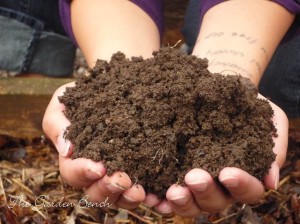Question: We are building a new house and would like to have flower gardens around it. How and when should we start a new garden?
 To start new flower beds, begin with the basics. The first step is to decide where, what shape and how large you want the beds to be, considering design elements, how you plan to use the garden and how the beds fit into your overall landscape plans. That may sound overwhelming, but if you’re a do-it-yourselfer, you can start small and build and expand over time.
To start new flower beds, begin with the basics. The first step is to decide where, what shape and how large you want the beds to be, considering design elements, how you plan to use the garden and how the beds fit into your overall landscape plans. That may sound overwhelming, but if you’re a do-it-yourselfer, you can start small and build and expand over time.
Start with the most basic element, the soil. Investing a little effort into it at the beginning ensures that the beds will get off to a good start and get better over the years.
The ground around new construction is often packed down and littered with nails, chunks of cement, wood chips and other building detritus, so start by cleaning up as much as possible. Then take the time to have a soil test done. This will let you know what nutrients the soil contains and what amendments may need to be added for what you are planning to plant. Your county’s extension office can provide the necessary materials and instructions and will test the soil for a small fee.
You may also need to improve the soil’s texture. The best soil for growing most plants is loamy, and holds together somewhat when you squeeze a handful of it, but crumbles easily. You can improve tight-clumped clay soil or loose, sandy soil by working in organic matter, such as compost or peat moss.
The soil improvement phase can be done soon, after the ground is no longer frozen. Later, when it’s time to select plants for the beds, consider the growing conditions (how much sun or shade, whether it’s a wet or dry area, etc.) along with what you like and what fits with your overall plan, your budget, and the time commitment you want to make in terms of watering, deadheading and grooming the beds.
Become familiar with the growth requirements, expected growing height and habits of the plants you plan to use. Consider that some perennials and flowers grown from bulbs may offer shorter bloom times but grow and develop over a period of time, while annuals can offer more quick-growing color, but are gone after one season. With a little planning, you can have flowers in bloom in your beds throughout spring, summer and fall.
Filed under: Flowers, Gardens, Grow a Garden | Tagged: compost, how to grow, New garden beds, Soil, soil amendments, soil test | 1 Comment »





